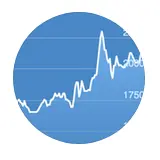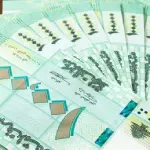أسعار صرف الدولار من أهم المصادر في لبنان
سعر الدولار في لبنان
Exchange Rate, Lira Rate in Lebanon
 lira-rate.com
lira-rate.com
![]() System Health Check: Latest Update 2022-12-05 17:15:03
System Health Check: Latest Update 2022-12-05 17:15:03
lira-rate.com
- المصدر: lira-rate.com
سعر الدولار اليوم في لبنان
سعر الدولار في لبنان؟
سجّل سعر صرف الدولار في السوق السوداء في لبنان اليوم حوالي 89,700 ليرة لبنانية للدولار الواحد.
المصدر: lira-rate.com
Dollar Price
lira-rate
.com
lira-rate
.com
Lira Rate in Lebanon
الدولار اليوم في لبنان
|LBP Exchange Rate
سعر صرف الدولار في السوق السوداء
سعر الصرف
دولار
lira-rate
.com

THE LEBANESE LIRA
Banque du Liban (BdL, Arabic: مصرف لبنان, English: Bank of Lebanon) is the central bank of Lebanon. It was established on August 1, 1963, and became fully operational on April 1, 1964. It is currently headed by Riad Salameh.
One of the main responsibilities of the bank is issuing Lebanon's currency, the Lebanese Pound. Other responsibilities include maintaining monetary stability, regulation of money transfers, and maintaining the soundness of the banking sector. Banking is a very important part of Lebanon's economy with over 100 different banks, which makes the role of BdL particularly important. It currently owns 99.37% of the shares of Lebanon's national carrier, Middle East Airlines.[2] The BdL is also the dominant shareholder of the Intra Investment Company (IIC) which in turn owns 53% of Casino du Liban, making it the only central bank worldwide to rule over a Las Vegas-style gambling casino.[3]
what is the Lira Rate in Lebanon?
- Devaluation
- Official government rate = LL 1,507.5; the government plans to move this gradually to 15,000
- Official "Sayrafa" rate = LL 28,000 (September 2021)
- "Lollar" (bank withdrawals of US$ in LL) = LL 8,000
- Parallel market rate = LL 39,800
Lira Rate faq, information about LBP Exchange Rate and more.
Economy of Lebanon, the Dollar Lira Rate
The economy of Lebanon has been experiencing, as of late 2019, a large-scale, multi-dimensional crisis,[26] including a banking collapse, a liquidity crisis and a sovereign default.[27] It is classified as a developing, lower-middle-income economy. The nominal GDP was estimated at $19 billion in 2020,[4] with a per capita GDP amounting to $2,500. In 2018 government spending amounted to $15.9 billion,[28] or 23% of GDP.
The economy significantly expanded after the 2006 Lebanon War, with growth averaging 9.1% between 2007 and 2010.[29] After 2011, the local economy was affected by the Syrian civil war, growing by a yearly average of 1.7% on the 2011–2016 period and by 1.5% in 2017.[29] In 2018, the size of the GDP was estimated to be $54.1 billion.[7] Lebanon is the third-highest indebted country in the world in terms of debt-to-GDP ratio. As a consequence, interest payments consumed 48% of domestic government revenues in 2016, thus limiting the government's ability to make needed investments in infrastructure and other public goods.
When using our Comparison app, we help answering many questions, like:
- Dollar to Lebanese Lira today
- dollar in lebanon today 2022 black market
- lira rate black market
- Today's Lebanese Lira/US Dollar Exchange Rate
- 100 USD to Lebanese Lira
- Dollar to Lebanese lira black market
- and much more...
What does LL stand for?
- LL stands for Lebanese Lira (currency)
lira-rate
.com
We do not sell or buy nor exchange money, and we are not the ones who determine the daily exchange rate for the dollar. We only publish it on our website according to what is being circulated from the top Sources, Websites & APPs in Lebanon. Very clearly we mention the "Source Name" next to the dollar rate, or usd to lebanese Lira exchange rate. the data contained in this website is not necessarily real-time nor accurate |
نحن لا نبيع ولا نشتري ولسنا من يحدد سعر الصرف اليومي للدولار, نحن فقط ننشره على موقعنا حسب ما يتم تداوله عبر المواقع الإلكترونية ووسائل الإعلام المحلية والتطبيقات. بوضوح شديد نذكر "اسم المصدر" بجانب سعر الدولار ، أو الدولار الأمريكي مقابل الليرة اللبنانية. أن البيانات الواردة في هذا الموقع ليست بالضرورة دقيقة أو في الوقت الفعلي |